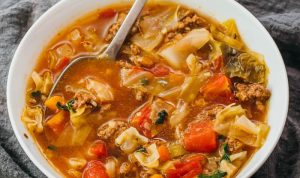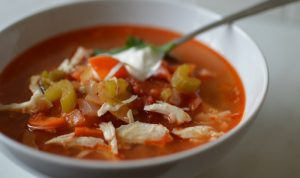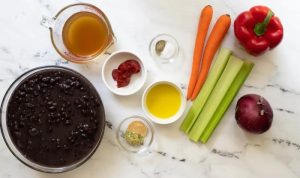Unlocking the Flavors: A Turkey Carcass Soup Journey
Soup recipe from turkey carcass – The aroma of simmering turkey carcass soup, rich and savory, is a comforting promise of deliciousness. More than just a way to use leftover turkey, crafting soup from the carcass unlocks a treasure trove of flavor and nutrients often overlooked. This journey will guide you through every step, from preparing the carcass to creating unique variations that will delight your palate.
Turkey Carcass Soup Basics
Turkey carcass soup offers a wealth of nutritional benefits. The bones are a rich source of collagen, which contributes to healthy skin, joints, and gut health. The broth itself is packed with minerals like calcium, phosphorus, and magnesium. Using a carcass also reduces food waste and maximizes the value of your Thanksgiving or Christmas turkey.
Both roasted and smoked turkey carcasses are excellent for soup. Roasted carcasses offer a more traditional, subtly sweet flavor profile. Smoked carcasses, on the other hand, impart a deeper, smoky complexity to the broth. The choice depends entirely on your preferred taste.
Gathering the right tools ensures a smooth and efficient soup-making process. Below is a table outlining essential equipment and their alternatives.
| Tool | Purpose | Alternatives | Notes |
|---|---|---|---|
| Large Stockpot | Simmering the carcass and vegetables | Large pot or Dutch oven | Choose a pot large enough to comfortably hold the carcass and ingredients. |
| Colander | Straining the broth | Fine-mesh sieve | Essential for removing solids and ensuring a clear broth. |
| Wooden Spoon | Stirring the soup | Silicone spatula | Avoid using metal utensils to prevent scratching the pot. |
| Ladle | Serving the soup | Large spoon | Facilitates easy and controlled serving. |
Preparing the Turkey Carcass
Proper preparation of the turkey carcass is crucial for extracting maximum flavor. Begin by removing any excess fat visible on the carcass. You can also carefully pull off any remaining meat clinging to the bones; this meat can be added back to the soup later for extra richness. Thoroughly rinse the bones under cold running water to remove any lingering debris.
Simmering the carcass is the key to unlocking its deep, savory flavors. The low, slow cooking process gently extracts collagen and minerals from the bones, resulting in a rich and flavorful broth. This process typically takes several hours, allowing the flavors to meld beautifully.
Choosing Ingredients for Turkey Carcass Soup, Soup recipe from turkey carcass
The beauty of turkey carcass soup lies in its versatility. A wide range of vegetables and herbs can be incorporated to create unique flavor profiles. The vegetables you choose will significantly impact the overall taste and nutritional value of your soup.
- Carrots: Provide sweetness and vibrant color.
- Celery: Adds a subtle earthy note and enhances the broth’s body.
- Onions: Contribute a savory base and depth of flavor.
- Parsnips: Offer a slightly sweet and nutty flavor.
- Leeks: Add a delicate oniony flavor with a hint of sweetness.
- Potatoes: Contribute creaminess and heartiness.
Carrots, celery, and onions form the classic mirepoix, a foundational flavor base for many soups and stews. Parsnips add a unique sweetness that complements the turkey, while leeks provide a milder onion flavor. Potatoes enhance the soup’s creaminess and overall texture.
Herbs and spices further elevate the flavor profile. The right combination can transform a simple soup into a culinary masterpiece.
| Herb/Spice | Flavor Profile |
|---|---|
| Bay leaf | Earthy, slightly sweet, and aromatic |
| Thyme | Earthy, slightly lemony, and herbaceous |
| Rosemary | Piney, slightly camphoraceous, and herbaceous |
| Black pepper | Spicy and pungent |
| Salt | Enhances and balances all other flavors |
Soup-Making Techniques
Crafting a delicious turkey carcass soup involves a methodical approach. Follow these steps for optimal results:
- Place the prepared turkey carcass in a large stockpot. Add enough cold water to cover the bones by a few inches.
- Bring the water to a boil over high heat, then reduce the heat to low, maintaining a gentle simmer.
- Skim off any foam that rises to the surface during the initial simmering (about 30 minutes).
- Add roughly chopped carrots, celery, and onions. Simmer for another hour.
- Add any other vegetables (like parsnips or potatoes) and herbs and spices. Continue simmering for at least another hour, or until the vegetables are tender.
- Remove the carcass from the pot. Strain the broth through a colander or fine-mesh sieve into a clean pot.
- Season the broth with salt and pepper to taste. You can also add any leftover turkey meat at this point.
- Allow the soup to cool slightly before serving or storing.
Cooking times may vary depending on the type and size of vegetables used. Always check for doneness by piercing the vegetables with a fork. For a richer broth, consider simmering the carcass for a longer period (up to 4-6 hours).
Variations and Serving Suggestions
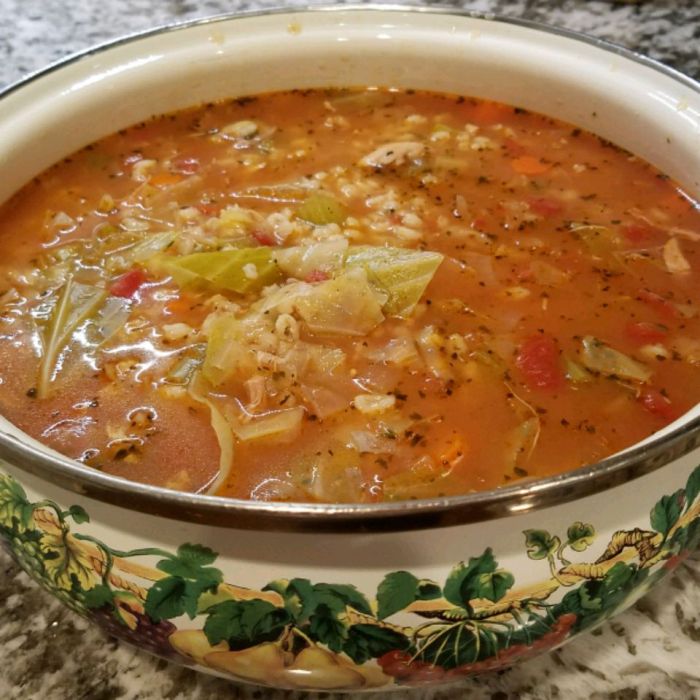
Source: allrecipes.com
The fundamental turkey carcass soup recipe can be adapted to create various flavor profiles. Here are three unique variations:
Italian Turkey Carcass Soup: Add diced tomatoes, fresh basil, oregano, and a pinch of red pepper flakes. Simmer until tomatoes are softened. Garnish with fresh parsley and a drizzle of olive oil.
Asian Turkey Carcass Soup: Incorporate ginger, garlic, soy sauce, sesame oil, and shiitake mushrooms. Garnish with chopped green onions and a sprinkle of sesame seeds.
That leftover turkey carcass? Don’t toss it! You can make an amazing soup brimming with flavor. Similar in spirit is a fantastic simple chicken noodle soup crock pot recipe , perfect for a busy week. Both recipes highlight the magic of transforming simple ingredients into comforting, nourishing meals. The turkey carcass version, however, offers a unique depth of flavor you won’t find anywhere else.
Mexican Turkey Carcass Soup: Add corn, black beans, diced jalapeños, cumin, and chili powder. Garnish with cilantro, avocado slices, and a squeeze of lime juice.
Garnishes not only enhance the visual appeal but also add layers of flavor and texture. Consider adding fresh herbs, a dollop of sour cream or crème fraîche, croutons, or a sprinkle of cheese.
Turkey carcass soup can be served as a hearty main course, a comforting appetizer, or a flavorful side dish. It pairs well with crusty bread or a simple salad.
Storing and Reheating Leftovers
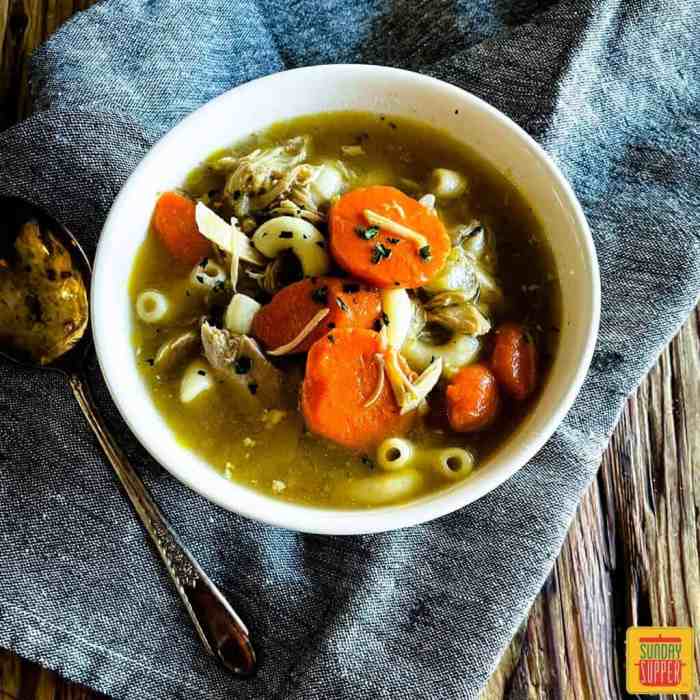
Source: sundaysuppermovement.com
Proper storage is key to preserving the quality and taste of your turkey carcass soup. Allow the soup to cool completely before storing it in airtight containers in the refrigerator. It can be stored for up to 3-4 days in the refrigerator. For longer storage, freeze the soup in airtight containers or freezer bags for up to 2-3 months.
Reheat the soup gently on the stovetop or in the microwave, avoiding high heat which can cause scorching or alter the texture. Stir occasionally to ensure even heating.
Visual Representation of the Recipe
Before simmering, the turkey carcass sits submerged in clear water, a stark contrast to the rich, cloudy broth that develops during the simmering process. The broth gradually deepens in color, transitioning from a pale yellow to a rich amber hue as the flavors extract from the bones and vegetables. The aroma evolves from a faint poultry scent to a complex blend of savory, sweet, and herbaceous notes.
The finished soup is a beautiful sight, a vibrant and inviting bowl of goodness. The broth is rich and translucent, with tender vegetables nestled amongst the flavorful broth. The texture is comforting and hearty, with a delightful balance between the tender vegetables and the rich, flavorful broth.
FAQ Guide: Soup Recipe From Turkey Carcass
Can I use a frozen turkey carcass?
Totally! Just make sure it’s completely thawed before you start.
How long can I store the soup?
In the fridge for up to 4 days, and in the freezer for up to 3 months.
What if my soup is too salty?
Add a potato or two while simmering; it’ll absorb some of the salt.
Can I use other types of poultry?
Absolutely! Chicken or duck carcasses work great too.



